1. Abrupt loss of kidney function
1.1. decreased GFR
1.2. retain urea and other nitrogenous waste products
1.3. deregulation of extracellular volume and electrolytes
1.3.1. big problems with potassium dysregulation
1.4. increase in serum creatinine by >0.3 mg/dL from baseline within 48 hours OR increases in serum creatine >1.5 times baseline within the prior 7 days
2. Tests:
2.1. BUN
2.1.1. High BUN might mean they need more fluids (dehydration)
2.2. Serum Creatinine
2.3. Strict I&O's
2.3.1. urine output is not always significantly changed
2.4. Lab findings: hyperkalemia, abnormal sodium
2.5. CBC
3. Kidney function requires:
3.1. Adequate blood blow (pre-renal)
3.2. Urinary tract is patent (post-renal)
3.2.1. Kidney is fine, but there is something obstructing
3.2.1.1. Can get backed up, which then causes kidney damage
3.3. Kidney is not damaged/ has integrity (renal)
4. Signs and Symptoms:
4.1. Intravascular volume depletion
4.1.1. tachycardia
4.1.2. delayed cap refill
4.1.3. low BP
4.1.4. weak peripheral pulses
4.1.5. dry mucous membranes
4.2. Fluid overload
4.2.1. edema
4.2.2. hypertension
4.2.3. heart failure
4.2.4. pulmonary edema
4.3. Renal disease due to systemic causes
4.3.1. rash
4.3.2. tender or swollen joints
4.4. palpably enlarged kidneys
4.5. signs of obstruction
4.5.1. poor urinary stream
4.5.2. therapeutic catheterization
5. Nephrotic syndrome
5.1. Caused by renal diseases that increase permeability across GFR
5.2. 4 clinical features
5.2.1. proteinurie
5.2.2. hypoalbuminemia
5.2.3. edema (or anasarca)
5.2.4. hyperlipidemia
6. Nursing Care and Interventions:
6.1. strict I&O
6.2. monitor/manage electrolytes
6.3. monitor/manage hypertension
6.3.1. worries about stroke
6.4. prevent infection
6.4.1. usually have central lines, Foley catheters
6.5. nutrition
6.5.1. still need protein
6.5.2. sodium restrict/increase? fluid restrict? potassium restrict?
6.6. promote growth and development
6.6.1. patients can be in hospital for a long time
6.7. educate and advocate
6.8. provide emotional support
7. Indications for RRT
7.1. severe fluid overload
7.1.1. leads to hypertension, pulmonary edema, respiratory failure, heart failure
7.2. metabolic and electrolyte imbalance not amenable to medical therapy
7.2.1. severe hyperkalemia
7.2.2. metabolic acidosis
7.3. symptomatic uremia
7.3.1. bleeding
7.3.2. pericarditis
7.3.3. encephalopathy
7.3.4. high BUN
7.3.5. wreaks havoc with bodily waste
7.4. Who needs dialysis?
7.4.1. AEIOU
8. Renal Replacement Therapy
8.1. Hemodialysis
8.2. Continuous RRT (CRRT)
8.2.1. Really sick, end of life conversations
8.2.2. Requires anticoagulants
8.3. Intermittent RRT (IRRT)
8.3.1. Highly efficient
8.3.2. Low cost
8.3.3. For ambulatory CRF patients, hyperkalemia
8.3.4. No anticoagulants required
8.4. Hybrid RTT (SLEDD)
8.4.1. Intermittent slow RRT technique
8.4.2. Slow rate prolonged timeframe (>6hr a day)
8.4.3. Flexibility in terms of intensity and duration
8.4.4. A alternative to CRRT which can be cost effective and may not require anticoagulants
9. Hemolytic Uremic Syndrome
9.1. Signs and symptoms:
9.1.1. lethargy
9.1.2. blood in urine
9.1.3. decreased urine output
9.2. Typical HUS
9.2.1. occurs after ingestion of a strain of bacteria expressing Shiga toxin
9.3. Atypical HUS
9.3.1. due to one or several genetic mutations that cause chronic, uncontrolled, and excessive activation of complement
9.4. Treatment:
9.4.1. supportive care
9.4.2. dialysis
9.4.3. steroids
9.4.4. blood transfusions
9.5. Risk factors:
9.5.1. Eat contaminated meat or produce
9.5.2. Swim in pools or lakes contaminated with feces
9.5.3. Have close contact with an infected person
9.5.4. The risk of developing HUS is highest for:
9.5.4.1. Children 5 years of age or younger
9.5.4.2. Adults 65 years of age or older
9.5.4.3. People who have a weakened immune system
9.5.4.4. People with certain genetic changes that make them more susceptible to HUS
9.6. Complications
9.6.1. Kidney failure
9.6.2. High blood pressure
9.6.3. Stroke or seizures
9.6.4. Coma
9.6.5. Clotting problems, which can lead to bleeding
9.6.6. Digestive tract problems, such as problems with the intestines, gallbladder or pancreas
10. RRT Complications
10.1. Peritonitis
10.1.1. Sepsis
10.2. HTN and other cardiac complications
10.3. Seizures
10.4. Obstructed catheter
10.5. Dialysate leakage
10.6. Hyperglycemia
10.7. Increased triglyceride levels
10.8. Increased protein loss
10.9. Parental stress
10.9.1. Financial burden
10.9.2. Burnout r/t repetitive nature of interventions
11. Acute post-streptococcal glomerulonephritis (APSGN)
11.1. Signs/Symptoms
11.1.1. Fever
11.1.2. Lethargy
11.1.3. Headache
11.1.4. Oliguria
11.1.5. Abdominal Pain
11.1.6. Vomiting
11.1.7. Anorexia
11.2. Nursing Management
11.2.1. Administer antihypertensives
11.2.1.1. Labetalol
11.2.1.2. Nifedipine
11.2.1.3. Diuretics
11.2.2. Monitor BP
11.2.3. Fluid restrictions
11.2.4. Sodium restrictions
11.2.5. Daily weights
11.2.6. I/O
11.2.7. Neuro evaluation
11.2.7.1. Encephalopathy
11.2.7.2. Seizures
11.2.8. Cluster care
11.3. Risk Factors
11.3.1. Streptococcal infections
11.3.1.1. Streptococcal Pharyngitis
11.3.1.2. Impetigo
11.4. Complications
11.4.1. Uremia
11.4.2. Renal failure
11.4.2.1. Acute
11.4.2.2. Chronic
